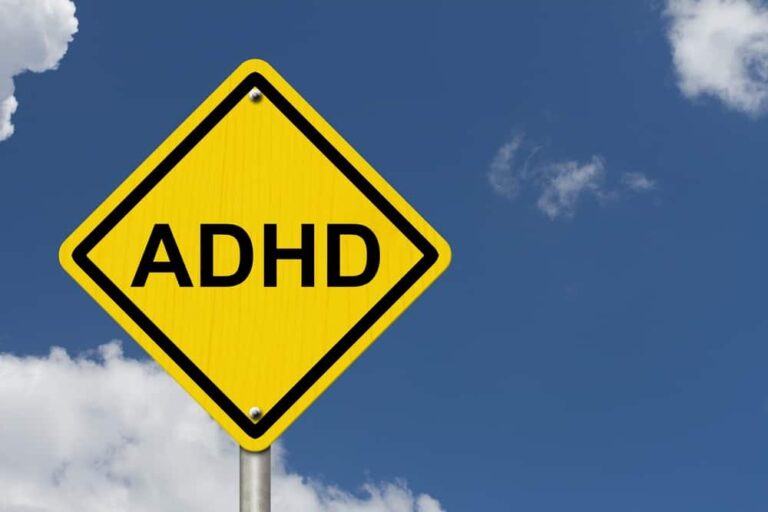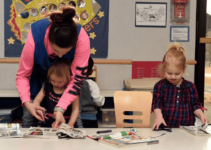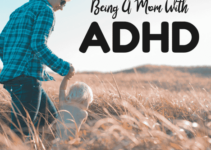There are more than 3 million cases of ADHD in the United States every year, making it a very common medical condition.
The fact that so many people suffer from it makes recognizing the signs of ADHD in different stages of life very important. This ensures that the person with the condition can be properly diagnosed as early in life as possible and be given proper treatment, preventing unnecessary suffering.
[thrive_custom_box title=”” style=”dark” type=”color” color=”#faf8d7″ border=”#000000″]
This resource was created by Dr Ree Langham PhD: a child psychologist with over a decade experience writing and editing medical articles.
[/thrive_custom_box]
[pullquote align=”normal”]
At a Glance
- ADHD is a neuro-developmental disorder that interferes with a person’s ability to control their emotions and behaviors, leading to inattention, impulsivity, and hyperactivity.
- ADHD can affect a child’s ability to learn and process information, excel at school, and develop long-term relationships with peers, friends, and family.
- ADHD signs can occur at all ages – from infancy to old age.
- Girls and boys tend to experience ADHD differently with boys exhibiting more physical symptoms and girls exhibiting more emotional and internal symptoms.
- Older adults can still exhibit ADHD symptoms. However, these individuals may be misdiagnosed or undertreated, due to the similarity of these symptoms to the symptoms of other conditions.
- With the proper treatment, people with ADHD can go on to live, happy and successful lives.
[/pullquote]
Table of Contents
Attention deficit hyperactivity disorder (ADHD) is a neuro-developmental disorder that affects children, teens, and adults. ADHD symptoms typically include inattention (an inability to focus or concentrate), impulsivity, and hyperactivity. It is important to note that while some people have one or more of these traits to a certain degree, a doctor will not diagnose a child, teen, or adult with the disorder unless these symptoms are so severe that they interfere with daily functioning (i.e. performing at school, work, and/or home).
Keep in mind that children and adults with ADHD will probably not manifest all the symptoms discussed below. They may manifest only two or three of them. However, to be diagnosed with the condition, they must manifest some of them.
The key for a diagnosis is the symptoms must interfere with daily functioning and occur most if not all of the time. Remember: everyone exhibits these symptoms to a degree, but they don’t do it to the frequency and severity of those with ADHD.
Attention-deficit disorder (ADD) is a subset of ADHD, in which an individual is neither impulsive nor hyperactive, but inattentive. In other words, this individual has a hard time paying attention, concentrating on the task at hand, completing tasks (due to a lack of focus), etc. However, this person does not have problems sitting still, being patient, or making rational, thought-out decisions.
ADHD Symptoms in Babies

Did you know that ADHD affects approximately 8-12% of American school-age children? Even more important is that a vulnerability towards ADHD occurs even before birth!2 Parents are usually the first ones to notice the signs of ADHD, which can occur even before a child can walk. While not all babies will develop and exhibit ADHD symptoms, it is best to be on the lookout for early signs of this disorder, so you can get your child the care he/she needs as soon as possible.
Listed below are common ADHD symptoms that occur in babies: (3)
“Fits,” Meltdowns & Tantrums
Many parents of children with ADHD report that their first clue was the frequency and intensity of their babies’ “fits,” meltdowns, and tantrums. Babies with ADHD tend to have a hard time controlling their tempers. As a result, they may kick, cry uncontrollably, ball up their fists in anger and scream, and/or move their legs constantly. Babies with ADHD may also forcefully rock in their cribs, bang their heads against the sides of their cribs or other hard surfaces, and/or flitter from toy-to-toy due to a loss of interest.
The problem is, babies without ADHD can also exhibit the same behaviors, so it is often hard to determine if these behaviors are true ADHD symptoms or simply “normal” baby behaviors. As a result, most pediatricians will wait until a child is older before making an official ADHD diagnosis. Therefore, if your child exhibits fewer “fits,” meltdowns, and tantrums as they age, there is a good chance your child does not have ADHD. However, if the outbursts become more prominent as he/she grows older, your child may indeed be showing the early signs of ADHD.
Impatience, Restlessness, Agitation & Anxiety
Other symptoms associated with ADHD in babies are: impatience, restlessness, agitation, and anxiety. In addition, a baby with ADHD may fight sleep, be extremely “busy” or in constant motion, be unable to stay asleep for more than 10-15 minutes at a time, be “fidgety,” easily excited or anxious, and/or shun cuddling. A parent may also have a hard time getting their baby to be still during feedings or finish baby food or bottles. Lastly, if a baby is at-risk for ADHD, they may have a hard time waiting for things like their bottle, a toy, etc.
Attention-Seeking Behaviors
Babies with ADHD often require more attention than babies without this condition. In fact, these babies tend to be easily upset and hard to handle, comfort, or please. Attention-seeking behaviors may take the form of excessive crying for no apparent reason, continuing to “mess” with things after being told “No,” the need to be continuously held, cuddled, soothed, and rocked, and/or repetitively making loud noises until someone notices him/her. Attention-seeking behaviors can go on and on for what seems like “forever,” which can be extremely tiring for new parents.
ADHD Symptoms in Toddlers

Toddlers are often associated with the “terrible twos.”? No parents are immune to this stage. But, for parents who have toddlers with ADHD, “the terrible twos” is often magnified. In other words, toddlers with ADHD experience all the “normal” behaviors that other toddlers experience, however, instead of these toddlers “growing out of these behaviors” by age of 3 or 4, they become more severe, more noticeable, more frequent, and more difficult to manage. (4)
The early signs of ADHD may become more noticeable once a toddler begins daycare or preschool and becomes more socially aware. In addition, a toddler exhibiting early signs of ADHD may have a hard time following instructions or paying attention at home, daycare, or preschool. They may also have a hard time sitting still and playing quietly with other children.
Like babies with ADHD, toddlers with the condition tend to be attention-seekers who will do things to get other people to focus on them. Unfortunately, these behaviors can lead to mischievousness. It is important to understand that early ADHD symptoms can negatively affect a toddler’s ability to perform daily functions – especially if the condition has not been adequately addressed.
ADHD is usually diagnosed during early childhood; however, it can start affecting a child, during his/her first or second year of life. (5) Therefore, it is important to distinguish between “normal” toddler behaviors and the early signs of ADHD. By learning the signs of ADHD in toddlers, you’ll be better able to get your toddler the services they need to become a happy, productive individual.
Listed below are early signs of ADHD in toddlers: (6)
Easily Distracted
Toddlers with ADHD typically have short attention spans. In fact, most are only able to entertain themselves (i.e. play with toys or watch television) for 5-10 minutes before becoming bored or distracted by something else. Toddlers with ADHD even have a hard time focusing on things that actually interest them.
They need a lot of structure to function properly, so “unstructured” tasks (activities they must complete alone) are especially difficult for them. Why? Because these toddlers are easily distracted, and as a result, quickly lose interest in activities.
The best thing to do if you suspect that your toddler has the early signs of ADHD is to limit their activities solely to the ones that catch their attention (i.e. watching Paw Patrol, playing with flashing or noisy toys, “playground time,” etc.). It is important for you to understand that there will be times when you are talking to your child and his/her attention flitters to a new sound or image.
Moreover, also remember that toddlers with this condition typically have a difficult time paying attention to details. And, because they are easily distracted, they are also prone to making thoughtless mistakes, “forgetting” and/or losing things, being absentminded, and leaving tasks uncompleted.
A toddler with ADHD may also have a hard time actively listening to what others say, following instructions, and obeying commands. Therefore, don’t be surprised if your child avoids or disengages from activities that require long stretches of focus and concentration.
Also keep in mind that as your toddler ages and enters school, they may forget what they learned in class that day or where they placed their school supplies like pencils, homework, etc. Your child may also make repetitive mistakes, shirk challenging activities, and become easily distracted in class.
Aggressive & Disobedient
Toddlers with ADHD are typically “busy.” In other words, they are high-energy little beings who are in constant motion. Just think of them as tiny “Energizer Bunnies.” And, because they are constantly moving, they are prone to accidents. In addition, they tend to be on the clumsy side, frequently getting injured because they are in perpetual motion most of the time. Toddlers with ADHD also may not pay close attention to their whereabouts or their parents’ or caretakers’ whereabouts, which means they need to be constantly supervised for safety purposes.
It is also common for toddlers with this condition to have a very hard time sitting still. They’d rather be up moving around, “messing” with things, and talking to their daycare playmates. In addition, these children are more likely to have severe meltdowns, “fits,” and temper tantrums when they are constrained or forced to sit in their seats for too long. Moreover, these children tend to have trouble making and keeping friends at daycare.
It is also important to understand that toddlers with ADHD have a hard time managing their own behaviors, and as a result, they don’t know the “right” way to behave with other toddlers. In other words, this condition affects how they play with other children, causing potential playmates to shy away from them.
Remember, toddlers with ADHD are impulsive, so they don’t like to wait for turns or even share toys. And, because these toddlers are impulsive, they are more inclined to forcefully take a toy away from another toddler or jump in front of others during games. These types of behaviors cause others to view them as “aggressive” or “mean.”
Lastly, these toddlers have a habit of breaking and/or destroying their toys and other children’s toys – sometimes due to curiosity and carelessness and sometimes deliberately.In fact, toddlers who are forced to wait their turn or share with other children may scream, kick, bite, throw things, push, pinch, and spit on other children, their parents, daycare teachers, and/or anyone else who tries to stand in their way or prevent them from doing what they want to do.
Fidgety & Uncontrollable
In addition, toddlers with ADHD are typically hyperactive, which means they hate to sit down. As a result, they may appear to be fidgety and uncontrollable. And, because they are always moving, there is always a risk of injury. Once these children become “worked up,” it can take hours to calm them back down.
Behaviors like fidgetiness and uncontrollability can be especially disruptive once toddlers begin daycare. These behaviors can take the form of excessive talking, constant getting up from chairs, and an inability to play peacefully with other toddlers – i.e. disobeying commands, misbehaving, interrupting others, jumping in front of others in line, talking back, getting into fights, snatching toys from other children, etc. These children may also have sleep problems – i.e. an inability to fall asleep and stay asleep at night.
Poor sleeping habits can lead to more pronounced ADHD symptoms like inattention, impulsivity, and “crankiness.” In other words, a lack of sleep can actually worsen a toddler’s ADHD symptoms. Although most toddlers are fidgety and uncontrollable from time-to-time, toddlers with ADHD tend to exhibit these behaviors almost all the time. Note: Uncontrollability can be dangerous for these toddlers if they are not properly supervised.
In other words, these children may aggressively push, grab, kick, or steal things from stores or other children. And, because they can be “wild,” there is a risk that they will impulsively run into traffic and/or run away from their parents and caregivers. Don’t forget that toddlers with ADHD are fast, which means they can move from one activity to another very quickly – even before they have finished the previous activity. Furthermore, they are constantly looking for something new and exciting to try, so it’s hard for them to be patient.
ADHD Symptoms in Preschoolers

ADHD is usually diagnosed before the age of seven, which means that many, if not most, children are diagnosed with the disorder during the preschool years. (7) As mentioned previously, children can start showing the early signs of ADHD during infancy. However, these symptoms usually increase in severity and frequency once they become preschoolers (under the age of 5).
Like younger children (babies) and older children (school-age children and teens), the key symptoms of ADHD in preschoolers are: inattentiveness, hyperactivity, and impulsivity – lasting for 6 months or longer. (8) To be diagnosed with ADHD, the preschooler must also have one or more of the following markers – inattention, hyperactivity and/or impulsivity AND the marker(s) must be more noticeable and troublesome in that preschooler than it is for other children in the same age group. (9)
Lastly, the preschooler MUST exhibit this marker(s) in a variety of situations. (10) On the flip side, a preschooler who only has trouble sitting in his/her seat at daycare or preschool, but not at church or home, probably does not have ADHD.
Listed below are the signs of ADHD in preschoolers: (11)
Doesn’t Pay Attention
Preschoolers with ADHD, who exhibit inattentiveness and have a hard time paying attention to directions and following instructions in class, tend to make more careless mistakes than preschoolers who do not have the disorder. In addition, these children may leave tasks unfinished and/or become easily distracted – not just when completing tasks, but also when playing with peers.Moreover, preschoolers with ADHD may “forget” or lose things more easily than other preschoolers their age.
Furthermore, teachers and parents may misinterpret a preschooler’s inattention as being willfully disobedient, when in reality, it’s just a symptom of his/her condition. So, even if a preschooler is given clear instructions, he/she may still have a difficult time processing those instructions or grasping new commands. Lastly, these preschoolers may hop from activity to activity and/or habitually daydream.
Overly Talkative & Squirmy
Preschoolers with this condition tend to be in constant motion and be very “chatty.” These preschoolers may have an extremely hard time sitting quietly in class and/or calmly finishing concentration-based activities, preferring to run around the class, “meddle” with things, “mess” or touch things, or play with dangerous or forbidden objects like: television cords, window blinds, vases, scissors, the teacher’s desk, etc.
As mentioned previously, preschoolers with ADHD may have a hard time engaging in activities that require “stillness,” such as sitting down for dinner with their families, watching TV shows or movies, being cuddled, and/or having a bedtime story read to them.
They may also have a difficult time quietly playing by themselves. In fact, they may become fidgety and antsy when forced to participate in activities that require sustained “stillness” and “calmness.” It is important to note that preschool boys with ADHD tend to be more hyperactive than preschool girls with the condition. (12) However, both genders exhibit hyperactive, impulsive, and inattentive behaviors while in preschool.
Impatient & Rash
It is common for preschoolers with ADHD to be impatient and behave rashly on a regular basis. It is also common for these children to blurt out answers to questions even before the question has been asked in its entirety. These children also have a hard time controlling their emotions and behaviors, resulting in impatient and impulsive actions like: snatching toys from other preschoolers, jumping line for lunch or recess, interrupting other children while they are speaking, and doing things immediately when told to wait.
ADHD Symptoms in Kindergartners

A kindergartner may have ADHD if they have a hard time sitting still during class, have frequentmeltdowns and tantrums, don’t like to share with other children, can’t focus for long periods of time, get bored and distracted easily, do things without thinking, make careless and repetitive mistakes, have a hard time completing simple tasks that require concentration, or have trouble making and keeping friends because of their aggression and poor social skills.
Listed below are the signs of ADHD in kindergartners: (12)
Unable to Concentrate or Focus
Kindergartners with ADHD typically have a difficult time concentrating or focusing. However, these children are better able to concentrate and focus if they are doing something that excites or interests them. For example, if a little boy loves playing with cars and trucks, he may be able to sit and play with these toys for 30 minutes to an hour without losing interest. On the flip side, if he is sitting in class reciting the alphabet with his classmates, and this activity does not stimulate him, he may lose interest during the first 10 minutes. As a result, he may stop listening to the lesson, get up, and wander around the room.
The truth is, most children between the ages of 5 and 6 can quickly become distracted when bored. Therefore, it can be hard to determine if the inattention is “normal” young child behavior or signs of ADHD. One clue that a kindergartner is showing the signs of ADHD is if he/she always or almost always has trouble focusing on assignments and tasks that require sustained concentration. In other words, if a kindergartner repeatedly “zones out” when bored, he/she may have ADHD.
Chatty, Careless & Impatient
Although many young children can be chatty, careless, and impatient from time-to-time, kindergartners with ADHD display these tendencies most of the time. In other words, they repeatedly interrupt adults while they are talking, make decisions without fully thinking them through, act impulsively when it’s something they want to do, and talk excessively – most of the time.
These children have a hard time interpreting social cues and responding appropriately, especially during the early years of life. For example, a kindergartner with ADHD may blurt out the answer to a question before the teacher has called on someone to answer it. Note: These are common behaviors in kindergartners, however, in children with ADHD, this occurs more times than not.
In addition, a kindergartner with ADHD may continue to repeat the same behaviors, even if he/she is scolded and placed in time-out. This child knows they shouldn’t interrupt the teacher and classmates, blurt out answers, take toys from other children while they are playing with them, talk during class, and/or get up a wander around the room, but they simply can’t help it – it’s a compulsion.
A kindergartner with ADHD has little-to-no-control over these behaviors. Still, parents of kindergartners with ADHD may receive numerous calls from school about their child’s lack of attention, impulsive behaviors, and hyperactivity. More specifically, teachers may cite that this child does not follow instructions, makes careless mistakes, does not actively listen in class, can’t stay in his/her seat, and/or “messes with” or bothers other children during class. To teachers and classmates, this child may appear impulsive, “overly hyper,” and disruptive.
Wiggling & Having a Hard Time Being Quiet and Still
A kindergartner with ADHD will wiggle and have a hard time being quiet or still. For example, a kindergartner with this condition may find it challenging to lie down during naptime, sit still during story time, pay attention during lessons, and be quiet when working on “quiet tasks.” They may also interrupt the teacher while they are giving instructions, touch, smell, or lick things around them, listen to other people’s conversations, get up several times during lunch, etc.
In other words, kindergartners with ADHD may constantly feel the urge to move, so they may wiggle and squirm in their seats, tap their feet, play with their cups or plates, get up and down repeatedly during the day, etc. Note: Even though kindergartners are supposed to sit in their seats and follow instructions, these rules are nearly impossible for children with this condition.
ADHD Symtoms in Grade Schoolers

In general, grade schoolers must deal with a lot – i.e. new responsibilities, new schools, making friends, etc., but those with ADHD tend to have an even harder time grasping all the “changes” that are occurring in their lives. Typically, the signs of ADHD increase as a child grows. Note: ADHD symptoms can mimic other conditions like anxiety or sensory processing disorders. It is also important to note that grade schoolers can have ADD (attention deficit disorder) without the hyperactivity.
Regardless of whether a child has ADD or ADHD (with hyperactivity), it will most likely become noticeable during grade school. For example, a grade schooler with ADHD will probably be unable to focus on tasks, make good judgement calls and wise decisions, organize his/her class supplies, complete homework assignments and tests within the required timeframe, make and keep friends, excel in his/her classes, get along with others, sit still, be quiet, leave things alone that do not belong to him/her, follow instructions, commands, and rules, etc.
Listed below are the signs of ADHD in grade schoolers: (13)
“Daydreamy,” Unfocused, & Easily Distracted
Grade schoolers with ADHD tend to not finish tasks by deadline or within a reasonable amount of time. And, contrary to popular belief, these children aren’t always unpleasant, aggressive, loud, and rowdy. Rather, sometimes these children are “daydreamy,” unfocused, and easily distracted. While most grade schoolers with the condition are chatty and rambunctious, a lesser known sign of ADHD involves being extremely quiet and socially withdrawn.
For example, a grade schooler with ADHD may daydream, “zone out,” become distracted, stare into space, and “tune out” to what is happening around him/her. And, because this child is unable to “be present” and aware of what is happening around him/her, he may avoid or shirk activities that require sustained focus and attention. This child may have a hard time paying attention to instructions or conversations when a person is speaking directly to them. Lastly, a child with ADHD may say they are listening, but not be able to repeat back what they heard.
Forgetful & Careless
Grade schoolers with ADHD tend to be forgetful and careless.For example, a grade schooler with this condition may forget to complete or turn in his/her homework. They may even forget to do daily activities like brush their teeth, take a bath or shower, comb their hair, clean up their room, pack a lunch, take their textbooks to school, etc.
It is also common for grade schoolers with ADHD to lose things like toys, books, jackets, bookbags, etc. These children are also prone to making careless mistakes repeatedly. For example, a grade schooler with ADHD may solve a math problem wrong on a test, even though they have been shown how to work similar problems and has successfully solved them in the past. Or, this child may repeatedly break the same rule, even though they have been talked to about it several times.
Restless, Emotional & Easily Agitated
Grade schoolers with ADHD tend to be restless, emotional, and easily agitated. Because of this, it’s harder for them to develop and retain friendships – a vital component of growing and maturing. For example, a child with ADHD may throw a massive tantrum because they must wait to play with a toy or answer a question in class. Or, this child may cry for hours simply because a classmate won’t play with him/her.
A grade schooler with ADHD may also laugh at inappropriate times like during times of prayers, during tests, and/or when something bad happens. In addition, grade schoolers with this condition may become rage-filled if something frustrates or annoys them.
For example, a father promises his son pizza for dinner – his son’s favorite food. The child, in turn, asks his father every 5 minutes if it is time to eat yet. When his father tells him no, he “blows up” and starts kicking, screaming, and hitting everything in sight – simply because he has to wait to get the pizza.
Lastly, grade schoolers with ADHD may become restless very easily. For example, this child may constantly get up from his/her chair, run around the room, fidget in his/her seat, and wiggle and squirm when forced to sit still and be quiet for any length of time.
Thoughtless & Rash
Grade schoolers with ADHD can come across as thoughtless and rash. They can appear to not take the feelings of others into consideration and to ignore or disregard consequences. In addition, they may appear to make repeated mistakes, even though they have been warned, and behave impulsively (doing or saying things without thinking). In addition, this grade schooler may act hastily, leading to accidents. A grade schooler with ADHD may also have trouble recognizing the needs, wants, and/or desires of others.
Grade schoolers with ADHD may also have trouble in the following areas:
These grade schoolers may have a hard time sharing, taking turns, and waiting in the lunch or bathroom line, and/or they may find it difficult to wait to be called on in class or during games.
Letting Others Talk
Grade schoolers with this condition may also have a hard time letting others talk because they lack patience and proper social skills. As a result, they may interrupt others when talking or butt into conversations that don’t involve them.
Keeping Track of Things & Completing Tasks
Grade schoolers with ADHD may briefly become interested in a variety of areas, and as a result, begin numerous projects, chores, and assignments without completing them. They may flitter from thing to thing due to waning interests or something else catching their eye. The result – a lot of unfinished tasks. Moreover, a child with this condition may be disorganized. In other words, they may have trouble keeping track of all their tasks, projects, assignments, activities, and/or chores – which can lead to poor grades at school.
Following Instructions
Grade schoolers with ADHD tend to have problems following instructions, especially ones that involve multiple details or prolonged concentration and focus. They also do not do well when the instructions involve developing and executing a plan of action. As a result, they may make careless/reckless mistakes. Note: Just because grade schoolers with ADHD make repeated mistakes does not mean they are “slow” or “lazy.”
ADHD Symptoms in Teens

The teen years can be challenging for many, which makes getting an accurate ADHD diagnosis and receiving proper treatment extremely important. Surprisingly, girls tend to be the most underdiagnosed and undervalued ADHD population, simply because the DSM-V criterion was developed primarily for boys. (15) Teen girls with ADHD typically behave very differently than teen boys. (16) Teen boys with ADHD tend to show riskier, and more irresponsible and rebellious behaviors than teen girls, who tend to be more “daydreamy,” preoccupied, self-possessed, disorganized, and poor communicators. (17) Furthermore, teen boys with ADHD tend to be more hyperactive, while teen girls with ADHD tend to have lower self-esteem. (18)
Listed below are the signs of ADHD in teens: (19, 20, 21, 22, 23)
Disorganized
Both male and female teens with ADHD can be disorganized. However, teen girls with the condition can be especially “sloppy,” unfocused, and “messy.” For example, a teen girl with this condition may have a messy bedroom, desk, bathroom, closet, or book bag. She may also struggle with following instructions in class and/or adhering to routines at home.
Moreover, this teen may be forgetful, and have a hard time keeping up with “stuff” – i.e. car keys if she is old enough to drive, homework assignments, her purse, lunch bag, or book bag, personal belongings, textbooks, and/or school supplies. And, although almost all teens are “messy” from time-to-time, teens with ADHD can be so disorganized that it interferes with their daily functioning.
Unlike teen boys with ADHD, who are more physically reckless, teen girls with the condition tend to have poor verbal skills. In other words, they are typically poor communicators with inadequate social skills. They also tend to have low self-esteem, which affects their ability to make and keep friends. For example, a teen girl with ADHD may talk excessively, and be unable to determine from social cues when to stop talking. She may also repeatedly interrupt others to the point that it becomes annoying.
Because of poor communication and social skills, peers may view these girls as “overbearing,” “rude,” “irritating,” “aggressive” and/or “bossy.”
Single-Absorbed
While both teen girls and teen boys with ADHD can become self-absorbed, girls with the condition often have a harder time focusing and concentrating at home and at school. These girls may be more concerned with themselves (and what they want), than how others perceive them.
For example, a teen girl with ADHD may have trouble paying attention and listening to lectures (or other people), considering the consequences of their actions, and/or completing assignments, tests, chores, and tasks. As a result, peers may view them as inconsiderate or rude.
On the flip side, some teen girls with ADHD may come across as studious and timid, and as a result, go unnoticed or blend into the background. This is especially detrimental in the classroom, where making a presence is a key to success.
Preoccupied or “Daydreamy”
It is common for teen girls with ADHD to be preoccupied or “daydreamy” – more so for teen girls than for teen boys with the condition. For example, a teen girl with ADHD may become easily distracted by a cute boy or drama with peers. She may also develop a habit of staring aimlessly out the window during class, biting her nails, twirling her hair, or picking at her cuticles when she should be paying attention, finishing her chores, completing assignments, paying attention to the road, or studying for a test.
Easily Distracted & “Hyper”
Focusing at school can be especially difficult for teen males with ADHD. For example, a teen boy with this condition may push his homework aside to do something he enjoys like talking on the phone with his buddies, hanging out with his buddies, going on a date with the pretty girl from English class, listening to music, surfing the internet, scrolling through Facebook or Instagram, or playing video games.
In addition, this teen boy may make reckless mistakes, fail to complete tasks, chores, and assignments, “lose” or “forget” things on a regular basis, and/or keep an untidy, disorganized bedroom, locker, book bag, desk, or bathroom. He may even misplace things such as his cellphone, wallet, keys, homework, and/or personal belongings.
Teen boys with this condition also tend to be more hyperactive than teen girls. In fact, these boys tend to be more curious and ready for action than their female counterparts. Lastly, these boys typically take more risks than girls with ADHD. Teen boys usually exhibit more external symptoms of ADHD than girls, who tend to internalize the symptoms of the condition.
Edgy, Impatient & Aggressive
Both teen boys and girls with ADHD can be edgy, impatient, and aggressive, however, teen boys are more prone to exhibiting these behaviors than teen girls. In other words, teen boys with ADHD tend to have a hard time sitting still and focusing in class. As a result, some either ditch the “boring” classes or skip school altogether. These teens may also harbor pent-up anger and resentment, along with high levels of energy.
For example, a teen boy may take out his anger and frustration on his teachers, friends, authority figures, and/or parents by deliberately breaking rules, talking back, getting involved with drugs and alcohol, fist fighting with peers, engaging in risky behaviors, being disrespectful, and vandalizing property. These teens may also come across as moody and hostile to others.
Note: It is common for teen boys who exhibit these ADHD symptoms to become expelled or suspended from school because of their behavior. Moreover, teen boys with ADHD tend to be very “forgetful.” In other words, a teen boy with ADHD may “forget” to turn in his homework, study, go to doctor’s appointments or job interviews, finish chores, etc., opting to hang out with his friends or play video games instead. He may also constantly get into arguments with his parents and siblings at home and have poor grades at school.
Irresponsible, Reckless & “Out of Control”
Teens, both with and without ADHD, can be irresponsible, reckless, and “out of control” occasionally. However, teens with the condition tend to exhibit these behaviors more often than teens without it. In addition, these characteristics are found more often in teen boys than teen girls. Teen boys tend to have a difficult time controlling their impulses, unlike teen girls, who can have a hard time controlling their emotions. Because these teens have trouble controlling their impulses, they are prone to doing and saying things without thinking about how it will affect others.
For example, a teen boy with ADHD may try alcohol and drugs just because his friends are doing it, not thinking about the possible consequences. Or, he may engage in risky sexual behaviors – i.e. unprotected sex, multiple partners, etc. – without considering that he is placing himself at-risk for STDs and/or becoming a father way too early. This teen may also blurt out answers to questions in class and/or interrupt his friends, classmates, or teachers on a regular basis. And, because of his behavior, he may lose friends or have a hard time making and keeping friends.
ADHD Symptoms in Adults

Life can be challenging for any adult. However, for an adult with ADHD, life can be even more taxing. Adults with ADHD tend to be constantly late. They also tend to be highly disorganized and messy. In addition, adults with the condition may also “forget” things and become overwhelmed with work and/or home tasks and responsibilities. ADHD can affect an adult’s self-esteem, self-confidence, and self-image, along with relationships and job performance.
According to The National Institute of Mental Health (2018), approximately 4% of adults in the US between ages 18-44 experience the effects of ADHD. (24) It is important to note that some adults may develop ADHD during childhood, but cannot recognize the symptoms of it. As a result, they suffer with the effects of the condition for years before receiving an appropriate diagnosis and treatment.
Listed below are the signs of ADHD in adults:
Chaotic & Unable to Focus
The life of an adult with ADHD may be “chaotic.” In other words, this person may be disorganized and disorderly. Because this adult has trouble focusing and concentrating and is easily distracted, he/she may have problems at work and in relationships. For example, this person may have a hard time paying attention to instructions and minute details, and as a result, may skip steps when performing a work task. Skipped steps and inattention can lead to numerous, unnecessary errors, work call-outs, leaving tasks and chores unfinished, termination, relationship breakups, divorces, and destroyed friendships.
Adults with ADHD are also known for not paying attention when someone is speaking directly to them and interrupting others when they are speaking. These individuals have a hard time actively listening to others, like their friends, love interests, and even their bosses. Furthermore, these adults may surround themselves with clutter and be unable to properly organize materials and belongings.
Like others age groups, adults with this condition may deliberately avoid any tasks or activities that require sustained focus and concentration, such as reading, doing chores, studying for college exams, etc. Lastly, an adult with ADHD may complain that he/she “forgot” to do something like mow the grass, pick up his/her child from school, etc. Or, he/she may “forget” an important event like a birthday or anniversary.
Overly Emotional
Adults with ADHD may appear to be overly emotional. Because ADHD can affect various areas of life, it can throw a person’s emotions into a tailspin, leading them to remedy their boredom and disinterest by looking for the next “exciting” thing to engage in. In addition, minor frustration, annoyance, and irritation can catapult an adult with ADHD into a full-on mood swing, anxiety, or depression. An overly emotional person may experience relationship and job issues.
Impulsive
Adults with ADHD have impulse-control issues and have a hard time regulating their emotions and behaviors. For example, an adult with this condition may have problems with self-control. They may act hastily and be insensitive and inconsiderate towards others. Impulsivity can lead to a host of personal, career, and social problems. Other adults may shun this individual because they don’t like the interruptions and intrusive behaviors.
Adults with this condition may blurt out offensive things without thinking about the consequences and act rashly when they want something. For example, an adult with ADHD may become fussy or irate because the grocery line is too long, or may jump the line for the bathroom, because he/she needs to use it badly. This person may even throw another employee “under the bus” to receive a promotion that he/she has been wanting – not taking into consideration the other employee, who has also been waiting for the promotion. It is this impatience that causes issues in social situations.
Unmotivated
Adults with ADHD tend to be unmotivated. They may feel uninterested in fulfilling responsibilities or completing tasks, so they just won’t do them. A lack of focus, coupled with poor organizational skills and procrastination, can lead to a loss of job, poor self-esteem, and/or relationship issues. This lack of motivation most likely stems from reduced focus and concentration. Because adults with this condition are unable to focus and stay concentrated for long periods, they become unmotivated.
Accident-Prone & Hyper
Adults with ADHD can be both accident-prone and hyper. In other words, their movements, like their lives, may be disorganized, chaotic, clumsy, and disjointed. Hyperactivity can manifest as being “hyper,” edgy, or restless. Therefore, an adult with this condition may have a hard time relaxing, meditating, sleeping, reading, or participating any other calm activity.
In addition, this person may feel the need to constantly move by tapping their pen, pencil or feet, messing with their hair, chewing gum, messing with things that do not belong to them, squirming and wiggling, constantly getting up to talk to co-workers, or talking excessively. They may also “fast talk” a lot – even when others are not responding favorably. As a result, love interests and companions may view this person as annoying.
Restless & Anxious
It is common for adults with ADHD to feel extremely restless and anxious. They may have an internal urge to keep moving all the time and become angry, irritated, restless, or frustrated when they aren’t able to get everything completed that they started.
Moreover, adults with ADHD tend toward excessive worry about things, replaying troubling events repeatedly. This anxiety tends to lead to fidgeting in adults. They may have an urge to constantly move either by shifting in their seats, frequently getting up from their seats, snacking on something, talking to someone, or tapping their hands and feet.
ADHD Symptoms in Older Adults

It is important to note that diagnosing ADHD at any age can be challenging. Why? Well, currently there are no definitive tests or scans that can lead to a diagnosis. This condition is usually determined by certain universal behavioral markers uncovered during intake interviews and observations. ADHD may present differently in older adults, causing some researchers to question if fewer diagnostic criterion may be needed to accurate diagnose adults over the age of 40. (25)
The truth is, it is hard to assess ADHD in older adults, simply because this condition often mimics and overlaps with the natural aging process and other age-related conditions like dementia, mild cognitive impairment, and Alzheimer’s disease. Researchers even suggest that older adults with ADHD experience more driving accidents. In addition, they tend to be more “forgetful” than those without the condition. (26)
For example, an older adult may “forget” where they placed their keys, or they may forget important doctor’s appointments. Some may even forget how to get back home, mimicking dementia or Alzheimer’s disease. Moreover, they may have organizational and planning problems and have a hard time paying attention to details or paying bills. Lastly, they may find it impossible to focus on the daily newspaper, books, or even television sitcoms. It is also not uncommon for older adults to experience a decline in language skills and processing information.
In Summary…
It is important to know the signs of ADHD at any age because it often goes undiagnosed and untreated for years, leading to unnecessary suffering. If you are familiar with the signs, you are better equipped to get yourself or your loved one the treatment they need to live a happy, fulfilled life. Remember, having ADHD does not mean that you cannot go on to live an amazingly successful life. Being familiar with the symptoms of ADHD can enable you to better care for the people in your life who have the condition, and to create an effective care plan that will give you the tools to achieve the greatest health possible.
References:
- Silverstein, M., Hironaka, L. K., Walter, H. J., Feinberg, E., Sandler, J., Pellicer, M., Chen, N., & Cabral, H. (2015). Collaborative care for children with ADHD symptoms: A randomized comparative effectiveness trial, Pediatrics, 35(4).
- Brently, S. (2017). ADHD symptoms in a baby. Livestrong. Retrieved from https://www.livestrong.com/article/128677-adhd-symptoms-baby/
- LiveScience. (2012). Typical toddler behavior or ADHD? 10 ways to tell.
- Novotni, M. (2018). Yes, toddlers can have ADHD. ADDitude.
- Elizabeth, R. (2017). Signs of ADHD in a 2-year-old. Livestrong.
- HealthyChildren.org. (2015). Early warning signs of ADHD.
- HealthyChildren.org. (2017). Diagnosing ADHD in children: Guidelines & information for parents.
- CHADD. (2018). Preschoolers and ADHD.
- Coila, B. (2017). ADHD symptoms in children under 5. Livestrong.
- Bolyn, M. (2017). Children 5-6 ADHD symptoms in kindergarten. Livestrong.
- Morin, A. (2018). ADHD: What you’re seeing in your grade-schooler. Understood.
- Jacobson, R. (2018). ADHD in girls: What you need to know.
- Cummings, W. R. (2018). The difference between ADHD boys and ADHD girls. Psych Central.
- Connolly, M. (2018). ADHD or ADD in girls: Why it’s ignored, why that’s dangerous. ADDitude.
- Connolly. M. (2018). Easy-to-miss ADHD symptoms in girls. ADDitude.
- Jacobson, R. (2018). How to tell if your daughter has ADHD. Child Institute Mind.
- Bolyn, M. (2017). Symptoms of ADD in adolescent males. Livestrong.
- Grossberg, B. (2018). Inside your teen’s ADHD mind. ADDitude.
- National Institute of Mental Health. (2018). ADHD.
- Roggli, L. (2018). Inside the aging ADHD brain. ADDitude.
- Goodin, K. (2018). Famous people with ADHD. Parenting.











Thanks for informing me that poor sleeping habits in toddlers are an ADHD symptom. My husband and I have such a hard time trying to make our two-year-old son sleep. Moreover, Thomas, our son, is always easily distracted in daycare and can’t sit still. Perhaps it would be wise to have him checked so we can have him treated if he does have ADHD. Thank you for this!
What a load of ***! You target boys like they are a problem, any gender can have adhd yet all your examples are about boy and there hormonal traits.
For example, a teen boy with ADHD may try alcohol and drugs just because his friends are doing it, not thinking about the possible consequences. Or, he may engage in risky sexual behaviors – i.e. unprotected sex, multiple partners, etc. – without considering that he is placing himself at-risk for STDs and/or becoming a father way too early
Am here searching like others, take this site with a pinch of salt and educate yourself with other sites.
Sorry it came across that way. We definitely don’t think boys are a problem. In fact, some of our female staff have been diagnosed with ADHD and advocate for young girls as well.
Thanks for letting me know that a kindergartner who can’t concentrate or focus might have ADHD. My son is having a really difficult time now that he’s in school. He can’t sit still or pay attention. Maybe we should visit a professional to see if it’s because of ADHD.